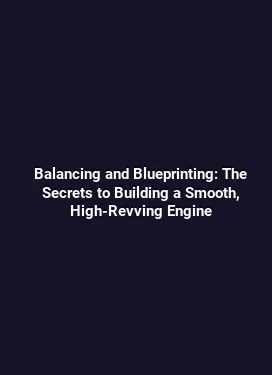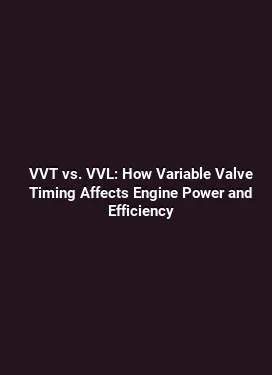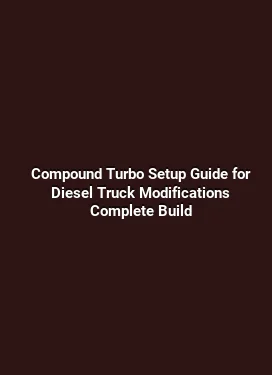How to Install Turbosmart eBoost2 Electronic Boost Controller Setup Guide
The Turbosmart eBoost2 electronic boost controller represents a versatile solution for tuning turbocharged engines, offering precise boost control, rapid response, and flexible mapping across a broad range of driving conditions. This guide provides a comprehensive, project-based approach to installing and calibrating the eBoost2, with practical tips, wiring considerations, sensor integration, and real-world parameter adjustments designed to maximize performance while maintaining reliability.
Understanding the eBoost2 System Architecture

The eBoost2 setup centers on three core elements: an electronic solenoid valve assembly, a robust pressure sensor, and a user-manageable controller that interprets engine load and RPM data to regulate boost pressure. The unit communicates with the engine’s vacuum or intake manifold vacuum source, adjusts the wastegate duty cycle, and delivers a smooth, controllable boost curve. The modular design makes it compatible with a variety of turbo configurations, including single-told and compound setups, enabling both street-driven efficiency and track-oriented performance enhancements.
Modern turbo systems benefit from a predictable boost response, reduced turbo lag, and improved throttle feel when the eBoost2 is correctly integrated. It is essential to approach the installation as a cohesive system upgrade rather than a standalone device; the gains come from harmonizing hardware, calibration software, and the vehicle’s existing control logic. The result is a boost strategy that aligns with the engine’s durability limits and the driver’s performance goals.
Preparation: Planning, Tools, and Safety
Prior to any mechanical work, map out the installation plan by reviewing the vehicle’s intake plumbing, existing vacuum lines, and available space for mounting the controller. Create a clear wiring diagram that traces the power supply, ground points, signal inputs, and the solenoid connections. Gather high-quality electrical connectors, heat shrink, protective housings, and a fuse or dedicated power rail to ensure reliability under load. A clean, well-labeled setup reduces troubleshooting time and accelerates calibration cycles.
Best practices emphasize working in a well-ventilated area, disconnecting the battery during wiring, and verifying all connections with a multimeter before power is applied. The eBoost2’s signal routing relies on precise pressure data and stable electrical power; any intermittent ground or voltage drop can manifest as unstable boost, erratic spikes, or calibration drift during high-load events. A methodical, step-by-step approach minimizes risk and ensures the system behaves consistently across the full RPM and boost range.
Hardware Overview: Components and Mounting Considerations
The eBoost2 kit typically includes the electronic control unit, a movable pressure sensor, a boost solenoid, mounting hardware, and a set of harnesses. The sensor should be positioned to avoid heat soak while still accessing a representative pressure source—usually a feed from the intake manifold or throttle-body plenum. The solenoid is placed where vacuum lines can be cleanly routed to the wastegate actuator. When selecting a mounting location, consider engine bay heat, accessibility for adjustments, and proximity to other electronic modules to minimize EMI effects.
Fasteners should be stainless steel or corrosion resistant, and protective grommets or heat shields help preserve harness integrity in high-temperature environments. Ensure that the sensor is oriented to avoid exposure to oil vapors or condensate, which can skew readings. A neatly organized harness bundle with loom protection reduces abrasion risks and keeps the signal paths free from unintended interference.
Electrical Connections and Signal Integrity

The wiring loom carries power, ground, and signal lines to the control unit and solenoid. A solid ground is essential; locate a chassis ground with minimal resistance and clear access for a proper connection. Power should be fused close to the battery or power source to protect the controller from short circuits during aggressive driving. The signal lines carry the pressure sensor data and the PWM or duty cycle control signal to the solenoid. It is important to route these lines away from high-current ignition wires or other sources of electrical noise.
Use shielded or twisted-pair cabling for sensor and control lines when feasible, and double-check that connectors click securely into their housings. After installation, perform a continuity check on all circuits and verify that there are no inadvertent shorts. A clean electrical layout translates into repeatable boost responses and reduces calibration complexity when tuning maps for different driving scenarios.
Vacuum Plumbing and Sensor Placement
Effective boost control hinges on accurate pressure measurements. The eBoost2 sensor should be fed from a clean, stable pressure source—ideally a direct manifold pressure tap or a dedicated vacuum port with a clear signal path. Avoid tapping into lines that experience abrupt pressure changes or are influenced by throttle plate movements, as rapid pressure fluctuations can introduce noise into the readings.
In many installations, a short run of smooth-bore hose connects the sensor to the sampling point, with a small filter or restrictor only if required by the system design. The wastegate actuator line should be as short and straight as possible, with gentle bends to prevent kinks. A routing plan that minimizes vacuum leaks and ensures airtight seals is critical for achieving precise boost control under load.
Tuning the Vacuum Network for Stability
Achieving stable boost requires that the vacuum network remains consistent across RPM bands. A common practice is to isolate the sensor line from transient sources and to ensure that the wastegate line remains within its specified vacuum range. If the engine exhibits boost creep or overshoot, verify that all vacuum seals are intact and that there are no leaks in the intake plumbing. A leak check with a smoke test or simple soapy water method can quickly reveal the problem areas.
Programming and Calibration Strategy
The eBoost2 control unit uses software-driven maps to translate engine conditions into a target boost level. A well-structured calibration starts with a baseline map, followed by progressive testing to observe the system’s response under controlled loads. When building the map, align boost targets with the engine’s tolerance for compression, fuel demand, and clutch or transmission capabilities. A methodical approach helps prevent sudden spikes, which can stress the turbo and auxiliary components.
Key elements of the calibration process include establishing an initial boost target, setting soft and hard cut boundaries, and selecting a response mode that matches the vehicle’s intended use—street driving, hot laps, or drag performance. The calibration should also consider altitude and ambient temperature, as air density affects turbo efficiency and mass airflow readings. Maintaining a log of sensor readings, boost targets, and engine RPM during each test run enhances the repeatability of the tuning process.
Understanding Boost Curves and Responsiveness
A practical boost curve defines how quickly boost reaches the target after throttle input, how it stabilizes at peak RPM, and how it behaves during gear shifts. A smooth ramp reduces fatigue on the turbo and lowers the risk of knock or detonation by avoiding abrupt pressure changes. An ideal curve maintains consistent throttle response while protecting the engine and drivetrain from excessive boost at low RPMs or during sudden throttle releases.
To shape the curve, adjust parameters such as rise time, gain, and duty cycle boundaries. Start with conservative gains and gradually increase them while monitoring engine knock, fuel trim, and exhaust gas temperature. In real-world testing, this methodical progression yields a robust map that performs well across daily driving and high-performance scenarios.
Safety, Reliability, and Longevity Considerations
Boost control changes engine dynamics, so safety checks are essential. Implement soft cut thresholds to prevent sudden boost spikes that can overwhelm the turbo or lead to valve timing issues. It is prudent to set a maximum allowable boost and a recommended operating range to protect the engine’s internals, especially in tuned builds. Regular maintenance—checking hoses, seals, and clamps—helps preserve the integrity of the boost control system.
Fuel and spark management must remain aligned with boost targets. A higher boost setting increases load on the fuel system and ignition system, so ensure that fueling and timing are sufficiently advanced to prevent detonation. Periodic dyno testing or controlled road tests provide the most reliable data for confirming the system’s safety margins and performance gains over a range of operating conditions.
Diagnostics, Troubleshooting, and Fine-Tuning
When issues arise, a structured diagnostic approach reduces troubleshooting time. Start with electrical inspections: verify power, ground integrity, and signal connections. Next, inspect the vacuum system for leaks and confirm the sensor’s readings match the expected manifold pressure values. Compare live data with the installed map to identify mismatches that could indicate calibration drift or hardware fault.
Common symptoms such as lag, boost drop-offs, or inconsistent response often point to leaks, degraded sensors, or improper wiring. Use a step-by-step method to isolate each subsystem, then re-test after each adjustment. The process may reveal a need to re-sequence the wiring, relocate a sensor, or adjust a mapping parameter to restore stability and responsiveness.
Real-World Scenarios: Applications for Different Setups
For street-driven vehicles, a focus on smooth, consistent boost at low to mid-range RPMs provides a more enjoyable driving experience and better daily efficiency. In track or drag applications, the emphasis shifts toward a sharper response and higher peak boost—with the caveat that the engine’s fueling and cooling systems can sustain the added load. Each scenario benefits from a tailored ramp profile, learning from data logged under representative driving cycles to refine the boost curve and ensure reliability under sustained high-load operation.
When integrating with different engine configurations— gasoline, turbocharged inline-fours, V6/V8 platforms, or even small-displacement turbo builds—consider the unique fluid dynamics and exhaust characteristics. The eBoost2 is adaptable, but the calibration must reflect the specific turbine geometry, compressor efficiency, and intake plumbing to optimize performance without compromising longevity.
Maintenance Practices for Long-Term Performance
Regular inspection of the eBoost2 components helps maintain consistent performance over time. Check the solenoid for sticking or clogging, verify connector integrity, and ensure that there is no corrosion on power connections. Clean air filters and intake ducts to reduce contaminants that might affect the sensor’s accuracy or boost stability. Periodic recalibration after major engine work or changes in fuel strategy is prudent to preserve the system’s precision and reliability.
Documentation of all tuning sessions, including baseline readings and subsequent adjustments, provides a valuable reference for future work. Maintaining a history of track days, road events, and weather conditions helps interpret performance variations and ensures that the boost control strategy remains aligned with evolving maintenance and modification plans.
Trend Insights and Semantic Context
In modern performance tuning, the integration of electronic boost control sits within a broader strategy that includes timing optimization, fuel delivery, and cooling efficiency. Trends point toward data-driven tuning, where continuous logging, cloud-based parameter analysis, and cross-vehicle benchmarking inform more precise calibration decisions. Semantically related concepts such as sensor fusion, dynamic response, and adaptive calibration are increasingly commonplace, guiding practitioners to design boost strategies that are both robust and flexible across different driving disciplines.
By employing a holistic approach that respects the engine’s thermal envelope and mechanical limits, drivers can achieve a satisfying balance between immediate throttle response and long-term reliability. The eBoost2 becomes not just a device for increasing boost, but a component of a coherent performance ecosystem that supports consistent, repeatable results under a wide range of conditions.






